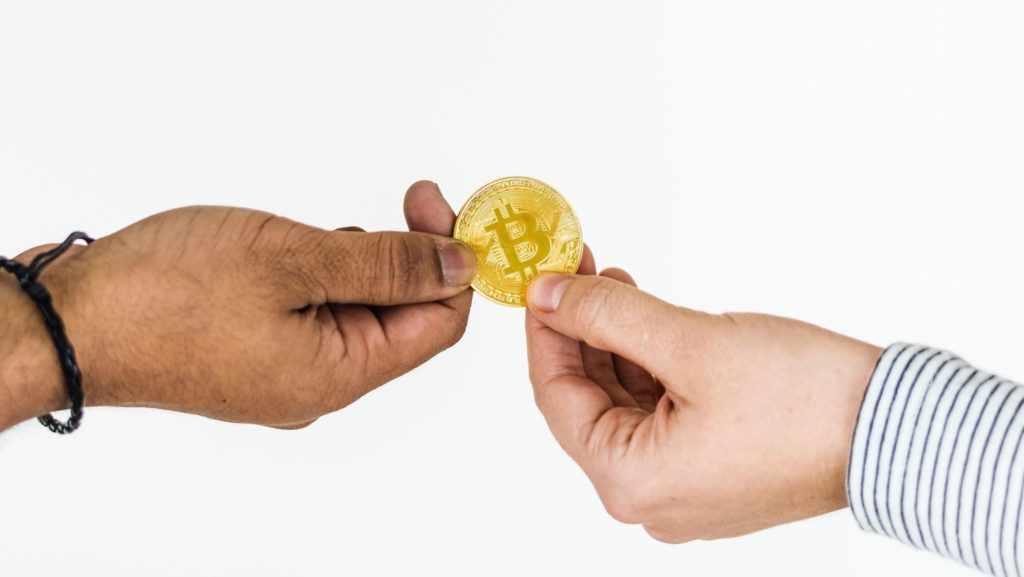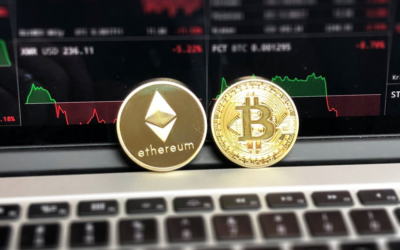From Barter to Bitcoin: A Brief History of Money, Trade, and Currency
The Barter System
Throughout the history of trade, barter has been used as a system of exchange for thousands of years. Long before the concept of currency was even conceived, people all over the world were exchanging goods and services with each other.
The roots of barter trade can be traced to 6000 BC when Mesopotamian tribes freely practiced the custom. It was later adopted by the Phoenicians who traded goods with other distant cities. The Babylonians also developed an improved system for bartering.
By the Middle Ages, bartering was practiced by world-traveling Europeans who traded crafts and furs for perfume, spices, and silk. In Colonial America, immigrants and Native Americans exchanged goods with each other.
Even today, bartering exists in various forms. Along with traditional methods that are practiced around the world, there are more sophisticated bartering methods that take place over the internet.
The First Coins: 1000 BC
The earliest forms of coins appeared in China around 1000 B.C. during the Stone Age. It was then that imitations of cowrie shells made out of bronze and copper where used as a form of currency. Along with these were metal tools that were used to purchase goods. These later developed into rounded coins that, although primitive, looked more like the coins that are in use today.
The earliest coins in China were made from base metals. They had holes that enabled them to be strung together with twine. By 500 B.C., round coins made of silver were prevalent around the world. Lydia – which was a part of-modern-day Turkey – was one of the first to adopt these coins. Soon afterward, the Greeks, Persians, Macedonians, and Romans developed their own coins. Unlike the coins in China, these were made of precious metals, such as gold, silver, and bronze.
Paper Money: 7th Century AD
In the 7th century, China progressed toward paper notes. These first appeared during the Tang Dynasty. In fact, China began circulating paper money as general currency almost 700 years before the first banknotes appeared in Europe.
The shift toward paper money was brought about by the challenges associated with transporting large numbers of coins. To make it easier – and safer – to bring sizeable amounts of money with them, merchants developed the practice of depositing coins with each other. They were then issued certificates in the equivalent value of the coins they deposited.
The use of paper money continued in China over the next 200 years. This was later changed over to gold reserve-backed paper money due to a shortage of copper, which was previously used to back the earlier paper money. The new gold reserve-backed paper notes issued by the Song Dynasty administration are now recognized as the world’s first form of legal tender.
The Gold Standard: 1816
Although China was at the forefront of the development of currencies for hundreds of years, the next significant event took place in Europe. It was in the early 19th century that England adopted gold as the official standard of value. At the time, guidelines were introduced that enabled the production of banknotes based on a non-inflationary system. Each of these banknotes had a specific gold value associated with it.
It should be mentioned that banknotes were already in use throughout Europe – including England – for hundreds of years before then. However, the value of these notes had never been associated with gold.
The United States officially adopted the gold standard in 1900 by virtue of the Gold Standard Act. With the act, gold was established as the only type of metal that could be used to back paper currency. The adoption of the gold standard in the United States paved the way for the subsequent establishment of the US Central Bank.
Fiat Money: 1930s
By the mid-1800s, the gold standard had become firmly established in many countries around the world. The fact that paper money now had tangible value helped bring about a period of profitable global trade.
But associating the value of currency with gold posed some unique challenges and problems. For one thing, the value of gold – and its associated currencies – fell with every discovery of a substantial amount of gold.
To address this issue, the US Congress established the Federal Reserve in 1913, which stabilized the value of gold and gold-backed currencies. However, World War I forced the suspension of the gold standard among European countries. This resulted in massive inflation as countries printed excessive amounts of paper currency.
After World War I, most countries readopted the gold standard, albeit in a slightly modified version. With the coming of the Great Depression in the 1930s, the gold standard once again fell out of favor.
US President Franklin D. Roosevelt played a significant role in the shift away from the gold standard. To prevent the continued depletion of gold in the Federal Reserve, he instituted a number of measures aimed at increasing the value of the dollar. This culminated in the temporary closing of the banks in March 1933. When the banks reopened, all of the gold that they had previously owned had passed into the ownership of the Federal Reserve.
Bitcoin: Modern Day
Paper money and coins remain widely used today and are still the most prevalent forms of currency around the world. Even so, the advent of the internet has given rise to the practice of monetary transactions taking place online. As a result, electronic money and cryptocurrencies have been developed. Some people who partake in forex trading are even starting to use cryptocurrency as a form of payment for trading. You can check out different major forex brokers to see which ones allow you to trade with cryptocurrency.
One of the most widely-recognized of these new currencies is Bitcoin, which is a form of cryptocurrency that isn’t subject to regulation by any government or financial agency. Bitcoin can be freely exchanged over the Bitcoin network to pay for goods and services. A growing number of merchants now accept Bitcoin and other types of cryptocurrencies as payment, and it seems that the market will continue to grow in size and scope well into the future.
Conclusion
Looking at the history of money as a whole, cryptocurrency is still in its relative infancy. Bitcoin – which is the first from of cryptocurrency to have achieved such a level of success and popularity – is still just over a decade old. Nevertheless, it is already being touted as the next global currency in many online news sources. Although coins and paper money will likely remain in widespread use for many years, the shift toward cryptocurrencies like Bitcoin is something that seems to be inevitable.










